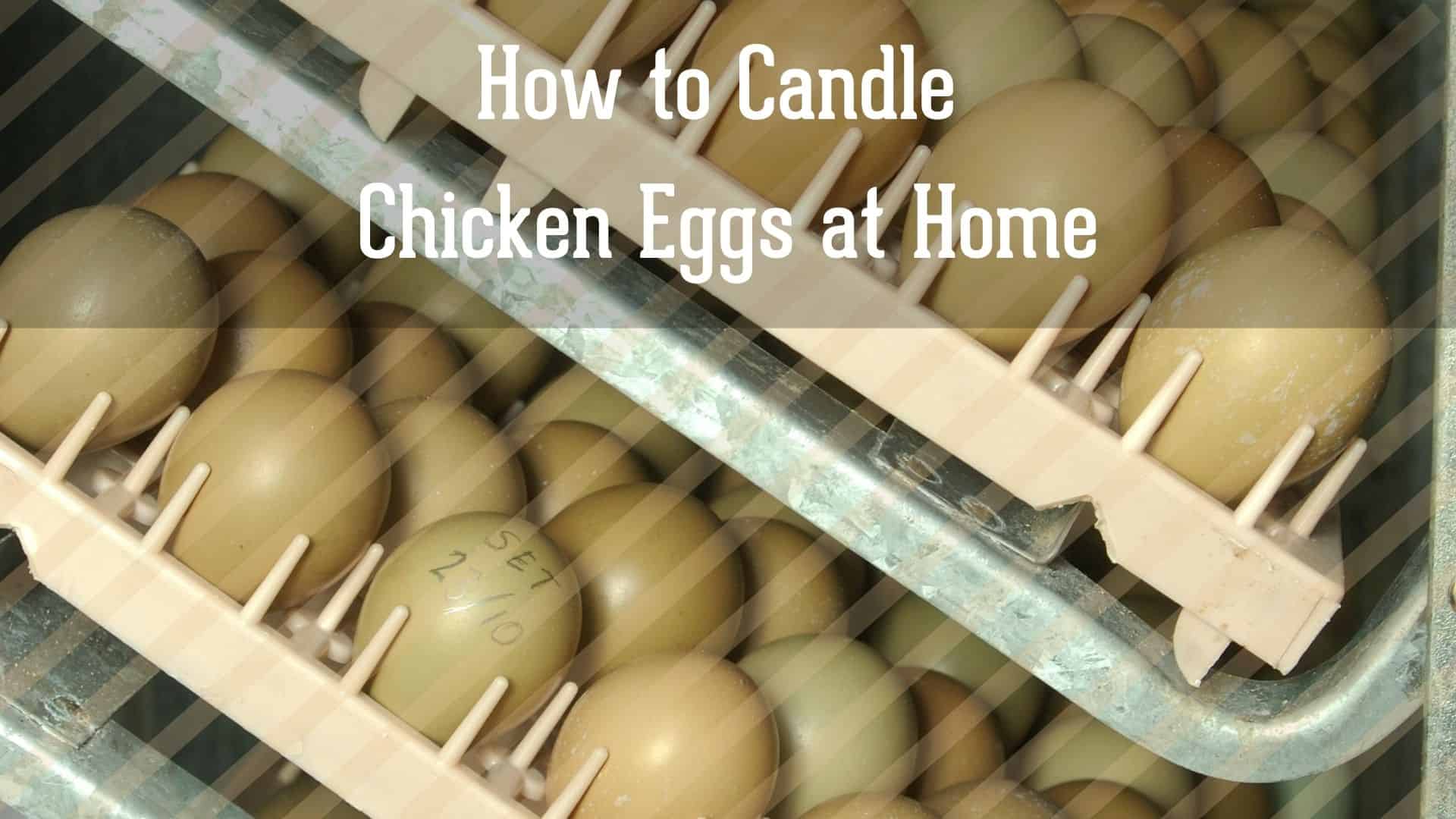
Have you ever wondered what’s going on inside a chicken egg while incubating? Well, wonder no more, because, in this article, we’re talking about how to candle chicken eggs.
Candling chicken eggs is a fun way to learn about what’s happening inside your little egg. It’s also a useful practice because it helps detect “yolkers” and “quitters” to discard. So read on to learn more about how to candle eggs and get rid of the duds in your incubator.
What is Candling?
Candling is the process is of utilizing light, shining “through” your eggs to see shadows and elements of a developing chick.
It allows you to see what is happening inside an egg along its way to full development.
It should be noted, that this process does have some limitations because it’ is not the most scientific way to understand what’s going on within your eggs.
Remember, you’re only able to see shadows of internal egg elements, and eggshells aren’t always the easiest to “see through.”
With that being said, candling takes practice and in time, it will give you an overall sense of how your eggs progressing!
Candling is specifically useful if you aspire to hatch eggs at home so you can determine which eggs are duds and can be removed from your incubator to prevent the growth of bacteria.
Eggs will rarely have a 100% hatch rate and some eggs will be “yolkers” or eggs that do not fertilize. While others, will merely stop growing within the incubation process, these are referenced as “quitters”.
If yolkers and quitters are left to incubate they will begin to rot and could burst and contaminate other eggs with bacteria and leave your incubator rather smelly.
Candling Limitations
Candling is not a sure-proof way to check your eggs and remember, it does have some limitations.
Here’s a list of limitations to consider:
- Candling will only help you determine if an egg is fertilized after day 4 when veins begin to develop.
- Darker eggs are more difficult to read, such as Welsummers and Marans, because of their shell’s dark pigmentation. However, it becomes easier as you gain experience and proficiency.
- The same is true for blue and green eggs. Their shell pigmentation can make candling a little more difficult to read.
- Lastly, candling doesn’t show you everything that is happening within the shell.
How to Candle Chicken Eggs
- Get your equipment ready. If you’re wondering why it’s candling, and not flashlighting, it’s because people used to utilize the flame of a candle to cast shadows of the internal elements of the egg on the shell, allowing a vague visual of the egg’s contents.
Today, we simply use a bright light (the brighter the better) with an opening smaller than the diameter of the egg. (Most poultry supply stores sell candling lights which look like small flashlights)
- Mark your eggs. Mark each egg with a regular pencil (no pens or markers as toxins can easily leach into the shell and cause an egg to stop developing) to keep track of which egg is which (this will come in handy for notetaking and record-keeping throughout incubation).
- Create a candling schedule. Eggs are sensitive, so taking them in and out of the incubator frequently can harm their development. Every time the incubator is opened, for example, you lose humidity and temperatures drop. So, it’s better to create a candling schedule to ensure they are not over-candled.
Candle your eggs on Day 1. Then again on Day 7, as you cannot tell if an egg is a yolker beforehand. After Day 7, wait about one week to candle again. Then once on Day 16 or Day 17. After day sixteen or seventeen do not candle the eggs again as they should not be moved out of the incubator before hatching.
- Candle your egg. While in a dark room, place your egg against your light source or candler. Put the large end of the egg up, directly above the light. Tilt it slightly to one side until you get the best view.
- Look for signs that indicate your egg is contains a developing chick. You can tell if an egg has a developing embryo by noting the following signs:
- If you have a strong light you will see visible blood vessels spreading from the center of the egg outward.
- If you have a weaker light, you might only see the clear bottom half of the egg and a darker top half. The clear bottom half is where the air sac is located. The darker top half is where the embryo will develop.
Next, look for duds:
- Look for signs that your egg is a yolker. As a yolker never fertilizes it has no chance of becoming an embryo thus it should be eliminated as soon as possible. Here are a few signs an egg is a yolker:
- If the egg looks the same on Day 7 as it did on Day 1,4 it’s a yolker.
- The inside of the egg will look extremely clear with no visible growth or development.
- Look for signs that your egg is a quitter. Some eggs do not flourish due to temperature issues, bacteria, and bad genes. As with yolkers, if an egg is a quitter discard it as soon as possible. Here are a few indicators of a quitter:
- The development of a blood ring which looks like a dark circle inside the shell.
- The sighting of blood spots or streaks inside the egg.
Egg candling can be a fun, and educational experience for yourself and children. It’s also a great way to find, and discard, duds to promote healthy growth amongst the developing eggs in your incubator.
Written by: Amanda Pieper
